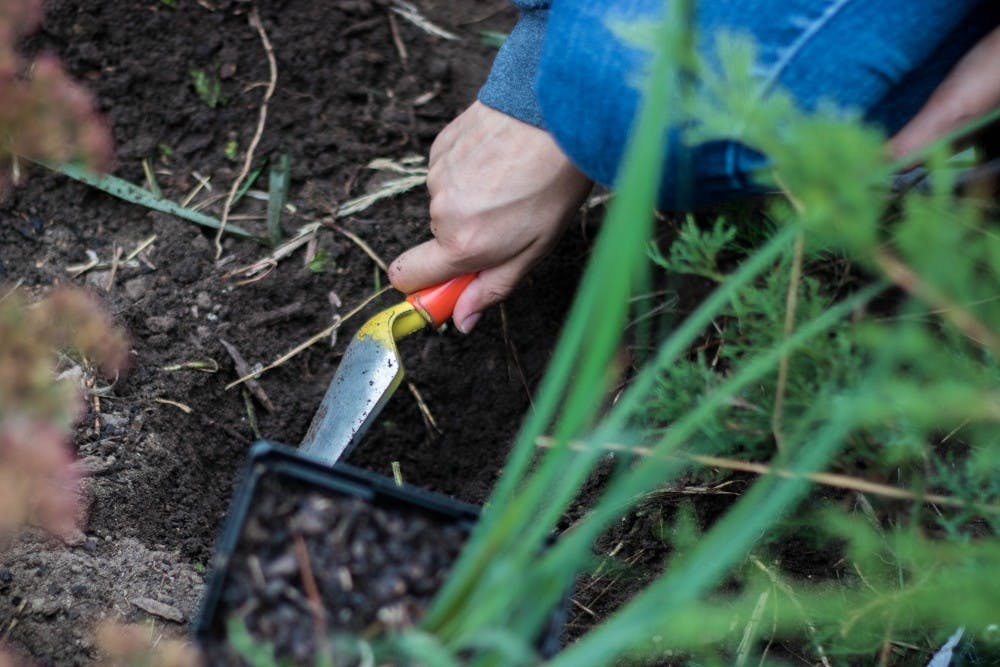A team of Michigan State University researchers has received a nearly $2 million dollar grant from the U.S. Environmental Protection Agency, or EPA, the Great Lakes Water Authority and Colorado-based organizations Brown and Caldwell, Progressive Farms and South Platte Renew according to the College of Agriculture and Natural Resources.
The researchers will investigate the role biosolids play in polluting soil, water and plants.
Biosolids are a product of wastewater treatment. When wastewater is treated, liquids and solids are separated. The separated solids are treated physically and chemically to produce nutrient-rich byproducts known as biosolids, according to the EPA.
Biosolids can be, and often are, applied to agricultural land to increase nutrients and plant health, or they can also be incinerated or landfilled.
Although biosolids can benefit the land, recent concerns have been raised around the potential pollution that they cause, particularly through the inadvertent introduction of the harmful contaminants known as polyfluoroalkyl substances, or PFAS, and pharmaceuticals and personal-care products, or PPCPs, the MSU College of Agriculture and Natural Resources said on its website.
The research was initially funded by Project GREEEN and originally focused on examining the accumulation of PFAS in food crops that had been grown in biosolid-enriched soil.
With the new funding, the research will move towards monitoring biosolid treatment processes for PFAS and PPCP concentration. Then, it will look towards filling knowledge gaps about the chemicals and will finally end with communicating the findings.
The ultimate goal of the new research is to develop quantitative models for human exposure.
“Wastewater treatment plants receive all of the waste from residential and industrial buildings – that includes sewage, anything else we put down the drain, and industrial effluent,” Assistant Professor and PFAS Research Scientist Courtney Carignan said via email. “The waste is treated and the liquid portion is discharged into streams, lakes, and oceans. The solid part is high in organic content and plant nutrients, so it has become common to apply it to agricultural fields. Biosolids are tested and regulated for some contaminants, but many are not – often due to a lack of exposure and toxicity data.”
PFAS, in particular, have recently raised public concern about the threat they cause to human health, resulting in an increase in research about the subject.
According to Professor of Environmental and Soil Chemistry Hui Li, PFAS are persistent, toxic and bioaccumulative.
In order to control and minimize PFAS risks, MSU has created the Center for PFAS Research, a research hub dedicated to quantifying, communicating and mitigating PFAS risks. The center will be a go-to location for PFAS research pertaining to agricultural contamination in the state of Michigan, in the United States and in the world.
“The goal is really to have an impact on the biosolid practices, and eventually have a positive impact on human and animal health,” Associate Professor of Plant, Soil and Microbial Sciences Wei Zhang said.
According to Zhang, researchers will study the release of PFAS and PPCPS from biosolids, as well as studying their movement in soil and uptake by plants. Then, they will use experimental and modeling approaches to study exposure risks to humans and livestock.
“This research demonstrates that MSU researchers are doing important and cutting-edge work, which will improve MSU's academic reputation,” Zhang said. “The grant will be largely used to fund the study of graduate students and postdoc, which provide education and employment opportunities to students.”
Support student media!
Please consider donating to The State News and help fund the future of journalism.
Discussion
Share and discuss “MSU researchers receive nearly $2 million grant to explore chemical pollutants in biosolids” on social media.






